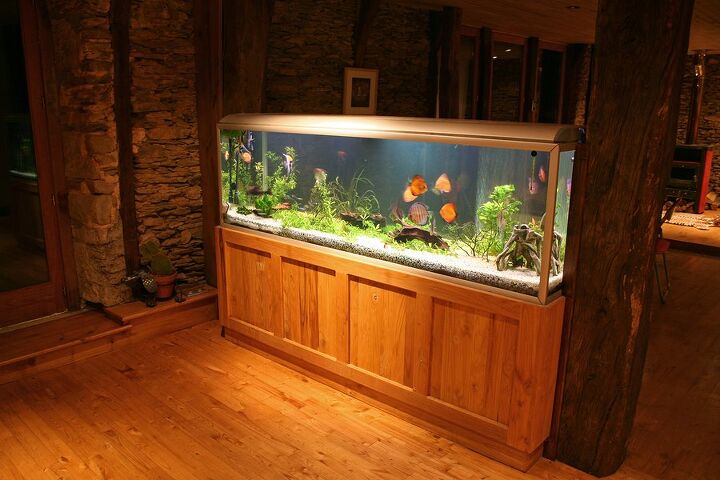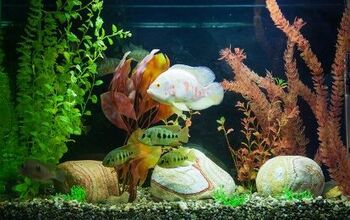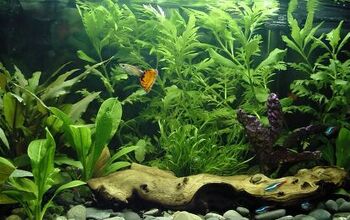Watts Going On With Your Aquarium Lighting?

Choosing a lighting system for your aquarium is not quite as simple as just going to the pet store and picking the first light fixture you see. There are a number of important factors to consider, and it’s more than just the number of watts per gallon. In this article, we’re going to offer an overview of the function of aquarium lighting as well as tips for choosing the best system for your tank.
What Purpose Does Aquarium Lighting Serve?
Having the right lighting system in place for your aquarium is important because tank lighting serves several essential functions. For one thing, it’s what illuminates your tank so that your fish can see and so you can enjoy your tank. Second, aquarium lighting provides energy for photosynthetic organisms. If you are keeping a fish-only tank, this might not be a major concern, but it’s important for planted tanks. Live plants are photosynthetic organisms that use the process of photosynthesis to turn light into energy as they convert carbon dioxide and other waste products into oxygen for your fish. The type and amount of lighting you need for your tank will depend on the type of tank you have.
Related: How to Tell If Aquarium Hobby Right for You
Factors to Consider When Shopping
If you know anything about aquarium lighting, you have probably heard about the “watts per gallon” rule. Basically, the type of tank you are cultivating will determine how many watts per gallons your chosen light fixture needs to provide. For tanks that include only fish and/or invertebrates, you don’t need strong lighting – about 1 to 2 watts per gallon should be sufficient. If you are keeping a planted tank, however, you will need extra lighting because your live plants will use it for energy. For planted tanks, you need a minimum of 2 watts per gallon, ideally 3 to 4.
The “watts per gallon” rule is the most basic factor you need to consider when choosing tank lighting, but it is not the only thing you should think about. You also need to think about the type of lighting, especially the spectrum. The spectrum of tank lighting is a measure of the “temperature” of the light and it is measured in degrees Kelvin (K) which also correspond to certain colors of light. For example, Red light is at the lowest end of the spectrum and violet light is at the highest end of the spectrum. Natural sunlight is measured at 5500 K and it contains a blend of all the colors on the spectrum scale – this is why it is often referred to as full-spectrum. This is the best type of lighting for an aquarium because it will enhance the natural coloration of your fish while also providing energy for live plants.
Related: How to Properly Acclimate New Fish in the Aquarium
In addition to the spectrum of your tank lighting, you should also consider the intensity. The intensity of artificial light can be measured in watts or lux – you are probably already aware that the higher the wattage of a bulb, the brighter the light. Watts are actually related to lux – one lux equals about 1.46 milliwatts of energy. More specifically, lux is a measure of the intensity of light as it impacts the water surface in your tank. The intensity of natural sunlight on the surface of the ocean is measured around 120,000 lux but, as the light penetrates the water, the intensity starts to diminish depending on the clarity of the water. If you really want to determine how much light is actually reaching your live plants you can invest in a lux meter. This will help you to choose the best type of lighting for your tank.
As you can see, aquarium lighting can be complicated. If you are simply looking for a lighting system that will maximize the aesthetic appeal of your tank, go with full-spectrum lighting. Just keep in mind that you will need a higher intensity of light for planted tanks, especially if you have a deep tank.

Kate Barrington is the loving owner of two cats (Bagel and Munchkin) and a noisy herd of guinea pigs. Having grown up with golden retrievers, Kate has a great deal of experience with dogs but labels herself a lover of all pets. Having received a Bachelor's degree in English, Kate has combined her love for pets and her passion for writing to create her own freelance writing business, specializing in the pet niche.
More by Kate Barrington






















